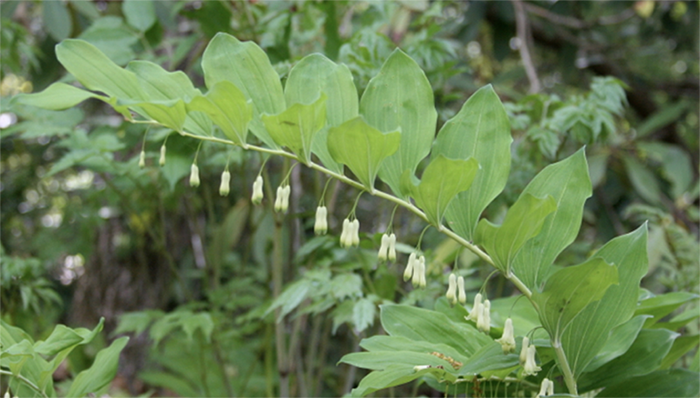How To Grow And Care For A Solomon's Seal Plant

Growing Solomon's Seal is a great way to add some beauty and elegance to your garden. This plant is known for its long, arching stems and delicate, bell-shaped flowers. Native to Asia, this plant has a long and rich history of use in traditional medicine, and it is also a popular herb among gardeners.
Plant Attributes
Solomon's Seal is a perennial plant that can grow up to 3 feet tall. It has large, green leaves that are shaped like a lance, and it produces small, white or greenish flowers in the spring or early summer. The plant prefers to be grown in a shady or semi-shady area, and it likes well-drained soil that is rich in organic matter.
Plant Care
When it comes to caring for Solomon's Seal, there are a few things you need to keep in mind. First of all, make sure that you plant it in a spot that gets plenty of shade. This plant does not tolerate direct sunlight very well, and too much of it can cause the leaves to scorch and die.
Another important aspect of caring for Solomon's Seal is soil quality. This plant prefers well-drained soil that is rich in organic matter, and it does not like to be waterlogged. If you're not sure whether your soil is good enough, you can always amend it with compost or peat moss to improve its texture and nutrient content.
Finally, Solomon's Seal is a relatively low-maintenance plant. You don't need to fertilize it very often, and it doesn't require a lot of pruning or deadheading. However, you should still keep an eye out for pests and diseases, as they can sometimes attack this plant.
Pruning
When it comes to pruning Solomon's Seal, there are a few different approaches you can take. One option is to remove the dead or damaged leaves and stems as needed, using clean and sharp gardening shears. You can also cut back the entire plant in the fall, once it has finished blooming for the year.
Another strategy is to divide the plant every few years, which can help to keep it healthy and vigorous. To do this, carefully dig up the plant and separate the clumps into smaller sections, then replant each section in a new location with fresh soil.
Propagation
If you want to propagate Solomon's Seal, there are a few different methods you can try. One option is to collect seeds from the plant in the fall, and then sow them in the spring. Another approach is to divide the plant, which can produce multiple new plants that can be transplanted to other areas of the garden.
Potting & Repotting
If you want to grow Solomon's Seal in a container, you can certainly do so. However, keep in mind that this plant is relatively large and will require a deep and spacious pot with plenty of drainage holes. You should also use a good-quality, well-draining potting mix to help the plant thrive.
When it comes to repotting Solomon's Seal, you should do this every few years to ensure that the plant has enough room to grow. To do this, carefully remove the plant from its current container and then replant it in a new pot with fresh soil.
Common Pests & Plant Disease
Solomon's Seal is relatively resistant to pests and diseases, but there are a few issues that you should watch out for. One common problem is slugs, which can feed on the leaves and cause damage. To prevent this, you can try using a slug bait or setting up a beer trap.
Another potential issue is powdery mildew, which can cause a white, powdery coating to develop on the leaves. This is usually caused by a combination of high humidity and poor air circulation, so try to keep the plant in a well-ventilated area and avoid overhead watering.
Common Problems
One of the most common problems with Solomon's Seal is that it can spread quickly and become invasive if not kept in check. To prevent this, you should divide the plant every few years and remove any extra clumps that you don't want to keep.
Another issue is that the plant can sometimes develop black spots on the leaves or stems, which can be caused by a fungal infection. To treat this, you should remove the affected leaves and stems and then spray the plant with a fungicide solution.
In conclusion, Solomon's Seal is a beautiful and elegant plant that can add a touch of Asian-inspired charm to your garden. With the right care and maintenance, it can thrive and produce lovely flowers year after year. So why not plant some today and see for yourself?



Post a Comment for "How To Grow And Care For A Solomon's Seal Plant"